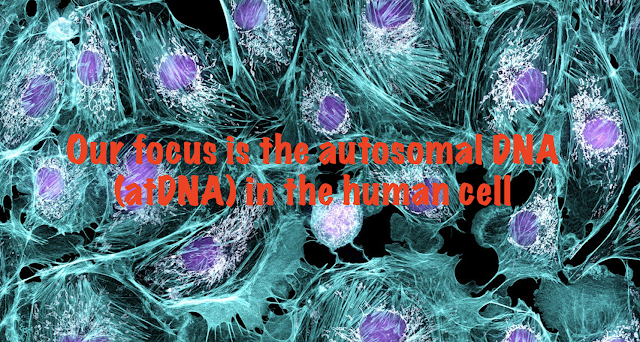DNA testing strategy for Australians
Update August 2025 - Upload to MyHeritage no longer available. As this is the site where most Australians will get the second largest number of matches, I would suggest testing there prior to testing at 23andMe when you have exhausted your AncestryDNA research.
Australians are taking commercial DNA tests to-
- find biological parent/parents,
- solve family mysteries generally who's my great-grandfather to great-great-grandfather,
- verify their genetic pedigree (and often finding it's not the same as their social pedigree) and
- establish ethnicity.
Louise Coakley (aka "genie1") is an Australian genetic genealogist with an excellent website. You can read about genetic genealogy HERE.
Testing at any of the major commercial DNA companies gives useful ethnicity estimates.
However, if you're testing for any other reason, my first step would be to take an autosomal test. Often called cousinship tests, you'll get matches across all your ancestral line. They're offered by all the major commercial companies but there's a definite path I'd recommend-
- testing at AncestryDNA which has the largest data base and most Australians test here,
- downloading your AncestryDNA data and upload it to MyHeritage, FamilyTreeDNA, LivingDNA and GEDmatch.com (instructions HERE) and
- as a last resort, testing at 23&Me.
Males may find it useful to take a Y-DNA test at FamilyTreeDNA. Y-37 is a good place to start and can confirm close patrilineal relationships. Real enthusiasts also take mtDNA full sequence tests at FamilyTreeDNA to explore the matrilineal line.
As I've become more familiar with genetic genealogy, it's clear that there's a structured approach we can take to solving our "DNA dilemmas" as shown in the following table:-
If you're a beginner, your should test at AncestryDNA and develop your skills and understanding of genetic genealogy there before you tackle others sites and the more advances techniques.
You should become familiar with using AncestryDNA grouping to cluster your matches. You'll build on your known matches to the possible relationship with unknown matches and hopefully breaks down those brick walls. My three prong approach to achieve this:-
- Sorting your AncestryDNA matches using the grouping tool at AncestryDNA,
- Building private, unsearchable "quick and dirty" research trees at Ancestry looking for Most Recent Common Ancestors (MRCAs) for your matches and
- Developing "What are the Odds?" (WATO) trees at DNAPainter to record your finding
AncestryDNA doesn't allow law enforcement access to their data base. However, your DNA could assist in identifying human remains and solving cold cases if you transfer your DNA data from AncestryDNA to FamilyTreeDNA and GEDmatch. Follow this link for step by step instruction to do this.


